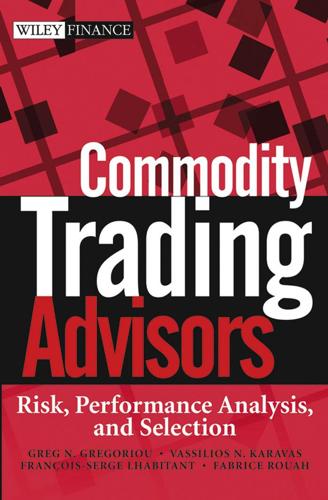
Commodity Trading Advisors: Risk, Performance Analysis, and Selection
by
Greg N. Gregoriou
,
Vassilios Karavas
,
François-Serge Lhabitant
and
Fabrice Douglas Rouah
Published 23 Sep 2004
In all cases the results were very similar, which 3.00 2.50 2.00 1.50 1.00 0.50 0.00 –0.50 –1.00 100 80 20 60 % in Alternatives Portfolio 0 40 60 40 20 100 80 % in Managed Futures FIGURE 1.5 Kurtosis 50/50 Portfolios of Stocks, Bonds, Hedge Funds, and Managed Futures 15 Managed Futures and Hedge Funds 3.00 2.50 2.00 1.50 1.00 0.50 0.00 –0.50 –1.00 100 80 20 60 % in Alternatives Portfolio 0 40 60 40 20 100 80 % in Managed Futures FIGURE 1.6 Kurtosis 33/66 Portfolios of Stocks, Bonds, Hedge Funds, and Managed Futures suggests that our results are robust with respect to the choice of managed futures index. SKEWNESS REDUCTION WITH MANAGED FUTURES Our findings lead us to question what the exact costs are of using managed futures to eliminate the negative skewness that arises when hedge funds are introduced in a traditional portfolio of stocks and bonds.
…
. © HFR, Inc. [15 January 2003], www.hfr.com; Managed Futures; ITR Premier 40 CTA Index. Note: Stocks offer substantially greater liquidity and transparency than the alternative investment products noted and may be less costly to purchase. 237 Managed Futures Investing 15.6% 15.4% 15.2% 15.0% 45% Stocks 1 35% Bonds 2 20% Managed Futures 3 14.8% 37% Stocks 27% Bonds 36% Managed Futures Traditional Portfolio 55% Stocks 45% Bonds 0% Managed Futures 14.6% 14.4% 50% Stocks 40% Bonds 10% Managed Futures 14.2% 14.0% 8.6% 8.8% 9.0% 9.2% *Results obtained by adding managed futures component at an incremental rate of 1% while simultaneously reducing the stock and bond portions by 1% each.
…
Satchell PART TWO Risk and Managed Futures Investing 149 CHAPTER 8 The Effect of Large Hedge Fund and CTA Trading on Futures Market Volatility 151 Scott H. Irwin and Bryce R. Holt CHAPTER 9 Measuring the Long Volatility Strategies of Managed Futures 183 Mark Anson and Ho Ho CHAPTER 10 The Interdependence of Managed Futures Risk Measures 203 Bhaswar Gupta and Manolis Chatiras CHAPTER 11 Managing Downside Risk in Return Distributions Using Hedge Funds, Managed Futures, and Commodity Indices 220 Mark Anson PART THREE Managed Futures Investing, Fees, and Regulation 233 CHAPTER 12 Managed Futures Investing 235 James Hedges IV Contents CHAPTER 13 The Effect of Management and Incentive Fees on the Performance of CTAs: A Note vii 248 Fernando Diz CHAPTER 14 Managed Futures Funds and Other Fiduciary Products: The Australian Regulatory Model 259 Paul U.
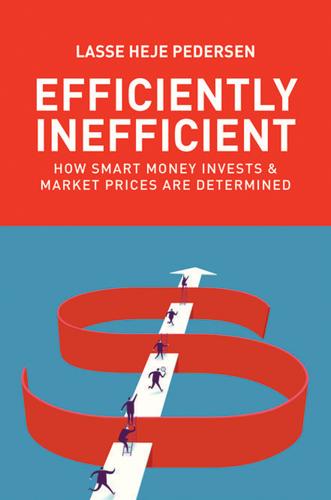
Efficiently Inefficient: How Smart Money Invests and Market Prices Are Determined
by
Lasse Heje Pedersen
Published 12 Apr 2015
TABLE 12.2. UNDERSTANDING THE PERFORMANCE OF MANAGED FUTURES Panel A. Performance of Managed Futures Indices and Top Funds Panel B. Time Series Momentum Explains Managed Futures Returns Notes: Panel A shows the performance of managed futures indices and the five largest managed futures managers in the Lipper/Tass database as of June 2012. All numbers are annualized. The alpha is the intercept from a regression on the MCSI World stock index, Barclays Bond Index, and the GSCI commodities index. Panel B shows the multivariate regression of managed futures indices and managers on time series momentum returns by trend horizon.
…
This graph plots quarterly non-overlapping hypothetical returns of the diversified time series momentum strategy vs. the S&P 500, 1985–2012. Source: Hurst, Ooi, and Pedersen (2013). 12.5. TIME SERIES MOMENTUM EXPLAINS ACTUAL MANAGED FUTURES FUND RETURNS We collect the returns of two major managed futures indices, BTOP 50 and DJCS Managed Futures Index,7 as well as individual fund returns from the Lipper/Tass database in the category labeled “Managed Futures.” We highlight the performance of the five Managed Futures funds in the Lipper/Tass database that have the largest reported “Fund Assets” as of 06/2012. While looking at the ex post returns of the largest funds naturally biases us toward picking funds that did well, it is nevertheless interesting to compare these most successful funds to time series momentum.
…
Rather than comparing the performance of the time series momentum strategy to those of the indices and managers, we want to show that time series momentum can explain the strong performance of managed futures managers. To explain managed futures returns, we regress the returns of managed futures indices and managers on the returns of 1-month, 3-month, and 12-month time series momentum: Panel B of table 12.2 reports the results of these regressions. We see the time series momentum strategies explain the managed futures index and manager returns to a large extent in the sense that the R-squares of these regressions are large, ranging between 0.46 and 0.64. The table also reports the correlation of the managed futures indices and managers with the diversified TSMOM strategy.
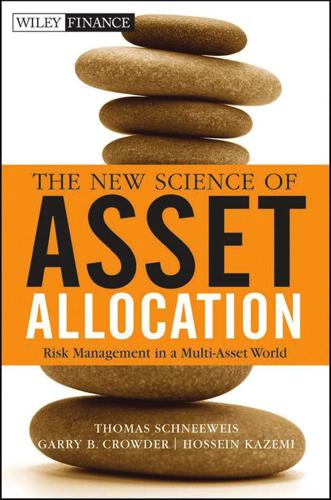
The New Science of Asset Allocation: Risk Management in a Multi-Asset World
by
Thomas Schneeweis
,
Garry B. Crowder
and
Hossein Kazemi
Published 8 Mar 2010
Portfolio combinations that 147 Sources of Risk and Return in Alternative Investments EXHIBIT 7.9 CTA and Comparison Benchmark Performance (2001–2008) Annualized Total Return Annualized Standard Deviation Information Ratio Maximum Drawdown Correlation with CTA Annualized Total Return Annualized Standard Deviation Information Ratio Maximum Drawdown Correlation with CTA S&P 500 BarCap US Agg CISDM CTA EW −2.9% 15.0% −0.19 −40.7% −0.26 5.7% 4.0% 1.44 −3.8% 0.17 9.2% 8.7% 1.05 −8.7% 1.00 S&P GSCI CISDM EW Hedge Funds FTSE NAREIT All Private Equity −0.5% 25.6% −0.02 −62.2% 0.22 5.6% 6.6% 0.84 −21.1% 0.02 6.4% 20.9% 0.31 −58.8% −0.12 −3.7% 26.4% −0.14 −70.3% −0.14 include traditional and alternative investments for the most recent eight year period 2001 to 2008 are also reviewed in Exhibit 7.10. Over the period of analysis, managed futures reported a higher annualized return and lower volatility than the S&P 500. Compared to the returns of the Barclays Capital U.S. Aggregate Bond Index, managed futures again reported higher rates of return albeit with higher volatility. Compared to the private equity and real estate and commodities, managed futures reported a higher return with significantly lower volatilities. Finally, compared to hedge funds, managed futures reported higher returns but higher volatilities. It can be observed from Exhibit 7.10 that the information ratios for portfolios that include at least a 10% investment in CTAs dominate those portfolios which do not contain an investment in CTAs.
…
ALTERNATIVE ASSETS SUCH AS HEDGE FUNDS ARE ABSOLUTE RETURN VEHICLES Yes and no, with the truth lying somewhere in the middle. For example, the sources of hedge fund returns and managed futures are often described as being based on the unique skill or strategy of the trader. Because hedge funds and managed futures are actively managed, manager skill is important. However, academic research demonstrates that hedge fund returns and managed futures are also driven systematically by market factors such as changes in credit spreads or market volatility, rather than exclusively by an individual manager’s alpha. Therefore, one can think of hedge fund and managed futures returns as a combination of manager skill and an underlying return to the hedge fund strategy or investment style itself.
…
Results show that, relative to other hedge fund strategies, hedge fund strategies with significant equity bias (e.g., event driven, equity long short, and emerging markets) had the most negative returns in the worst S&P 500 months as well as the highest positive returns in the months in which the S&P 500 had its best performance. MANAGED FUTURES (COMMODITY TRADING ADVISORS) The term “managed futures” represents an industry composed of professional money managers known as commodity trading advisors (CTAs) or commodity pool operators (CPOs). Commodity trading advisors or commodity pool operators manage client assets on a discretionary basis, using forwards, futures, and options markets as the primary investment area. Managed futures, through their ability to take both long and short investment positions in international financial and non-financial asset sectors, offer risk and return patterns not easily accessible through traditional (such as long-only stock and bond portfolios) or other nontraditional investments (e.g., hedge funds, real estate, private equity, or commodities).
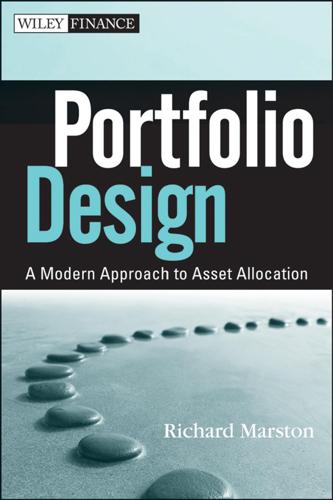
Portfolio Design: A Modern Approach to Asset Allocation
by
R. Marston
Published 29 Mar 2011
Passive investment involves buying a futures contract at the beginning of the period, then closing the position automatically at the end of the period. Active investment involves deciding whether to buy or sell the futures contract or simply staying out of the futures market this period. Many managed futures funds also take positions in currencies in addition to commodities. As a result, the returns on managed futures are low in correlation with those of passively managed futures (as will be seen below). They are quite distinct investments. In a sense, managed futures are a form of hedge fund. You are investing in the manager’s expertise. That expertise will guide the manager on when to be long or short in the commodity, whether to overweight one commodity relative to another, or whether to take positions more aggressively in currencies rather than commodities.
…
There is a case for including commodities in a portfolio, but it makes sense to diversify the commodity investment rather than to concentrate holdings in one precious metal. ACTIVE INVESTMENT IN COMMODITIES—MANAGED FUTURES Managed futures are on investors’ minds. In the 2008 downturn, this asset class gave investors an 18.3 percent return in a year when the DJ UBS index was down 35.7 percent and the Goldman Sachs commodity index was down 46.5 percent. Commodity prices turned down at mid-year and the active managers in the managed futures space obviously played this turning point well. Investment in managed futures could have been analyzed in the chapter on hedge funds. But it’s useful to compare the performance of these investments with their passive counterparts.
…
P1: a/b c12 P2: c/d QC: e/f JWBT412-Marston T1: g December 10, 2010 15:49 Printer: Courier Westford 252 PORTFOLIO DESIGN TABLE 12.7 Managed Futures Funds Compared with Passive Commodity Futures Indexes, Jan 1994–Jun 2009 Index Credit Suisse/Tremont Managed Futures Index Barclay CTA Index Goldman Sachs Commodity Index Dow Jones UBS Commodity Index Geometric Average Arithmetic Average Standard Deviation Sharpe Ratio 6.4% 6.9% 11.8% 0.27 6.2% 4.7% 6.3% 7.2% 7.8% 22.9% 0.33 0.15 6.2% 7.3% 15.7% 0.23 Indexes for Managed Futures Funds: Credit Suisse/Tremont Managed Futures Hedge Fund Index and Barclay CTA Index. Indexes for passive commodity futures funds: Goldman Sachs Commodity Index and Dow Jones UBS commodity Index.
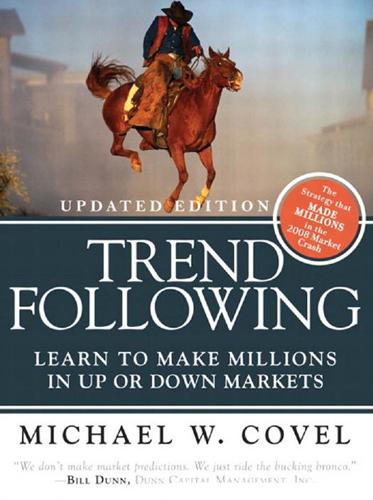
Trend Following: How Great Traders Make Millions in Up or Down Markets
by
Michael W. Covel
Published 19 Mar 2007
Futures Industry Association Conference Excerpt. Campbell and Company. 69. Mary Ann Burns, Industry Icons Assess the Managed Futures Business. Futures Industry Association (May/June 2003). 70. Value of Adding Managed Futures. Marketing Documents. Campbell and Company. 71. 2003 Disclosure Document. Campbell and Company. 72. Desmond McRae, 31-Year Track Record of 18.1%. Managed Account Reports: Extracting Inherent Value from Managed Futures (March 2003). 73. Barclay Trading Group, Ltd. Barclay Managed Futures Report. Vol. 2, No. 3 (Third quarter 1991), 2. 74. The Futures and Industry Association’s Future and Options Expo ‘98.
…
Jack Schwager, Market Wizards: Interviews with Top Traders. New York: New York Institute of Finance, 1989. 97. Barbara Dixon, Richard Donchian: Managed Futures Innovator and Mentor. Futures Industry Association. 98. William Baldwin, Rugs to Riches (Section: The Money Men), Forbes (March 1, 1982). 99. Barbara Dixon, Richard Donchian: Managed Futures Innovator and Mentor. Futures Industry Association. 100. Barbara Dixon, Richard Donchian: Managed Futures Innovator and Mentor. Futures Industry Association. 101. Barbara Dixon, Richard Donchian: Managed Futures Innovator and Mentor. Futures Industry Association. 102. William Baldwin, Rugs to Riches (Section: The Money Men), Forbes (March 1, 1982). 103.
…
Their strategy is designed to deal with the following math: CHART 3.3: Drawdown Recovery Chart Size of drawdown Percent gain to recover 5% 5.3% 10% 11.1% 15% 17.6% 20% 25.0% 25% 33.3% 30% 42.9% 40% 66.7% 50% 100% 60% 150% 70% 233% 80% 400% 90% 900% 100% Ruin 109 Chapter 3 • Performance Data Unfortunately, the investment community uses drawdown numbers to paint an incomplete picture of trend following. Trend trader David Harding of Winton Capital offered insight: “A key measure of track record quality and strategy ‘riskiness’ in the managed futures industry is drawdown, which measures the decline in net asset value from the historic high point. Under the Commodity Futures Trading Commission’s mandatory disclosure regime, managed futures advisors are obliged to disclose as part of their capsule performance record their ‘worst peak-to-valley drawdown.’ As a description of an aspect of historical performance, drawdown has one key positive attribute: It refers to a physical reality, and as such, it is less abstract than concepts such as volatility.
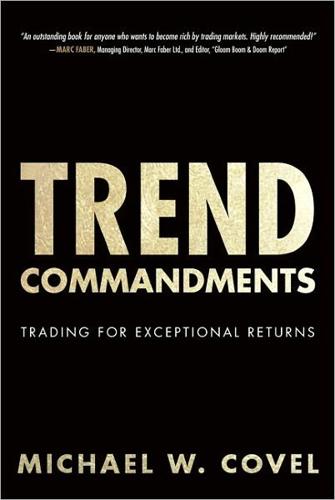
Trend Commandments: Trading for Exceptional Returns
by
Michael W. Covel
Published 14 Jun 2011
CTAs are the other quants the media never seems to cover accurately. Managed Futures: This is a term that describes regulated fund managers who use futures to trade for clients. It is an awful term because it fixates on the instrument (futures), not the strategy. Here’s the dirty little secret: Almost all successful managed futures trading firms use a trend following strategy. The term is often used interchangeably with CTA. Noted radio host and author Dave Ramsey recently had this to say about managed futures: “The term managed futures is virtually an oxymoron…with managed futures you’re basically betting on the future price of a commodity.
…
In its exemplary form, it is based on universal intellectual values that transcend subject matter divisions: clarity, accuracy, precision, consistency, relevance, sound evidence, good reasons, depth, breadth, and fairness.”13 With that in mind, here are some questions to ponder: 1. Is it believable that Joe Kernen, the anchor of CNBC’s longest running program, had no knowledge and/or comprehension of trend following, or other descriptions of it such as managed futures or CTAs? If he was forced to raise his right hand under the threat of perjury, do you think he would still have such a limited understanding of trend following and managed futures? 2. When Kernen asked about trend followers purportedly pushing markets further than they should be fundamentally, did that mean he had a way to determine the correct price level of all markets at all times?
…
Technical Analysis of Stocks and Commodities Magazine, Vol. 11, No. 3, March 1993, 122–124. See http://www.traders.com. 12. Francais Vaca quoted in CTA Confidential, “An Ongoing Series of Qualitative Investigations into Managed Futures Trading Programs.” Managed Account Research, 2010. Trade Everything 1. See http://www.clarkecap.com. 2. See http://www.abrahamtrading.com. 3. Francais Vaca quoted in CTA Confidential, “An Ongoing Series of Qualitative Investigations into Managed Futures Trading Programs.” Managed Account Research, 2010. Endnotes 251 Drawdown 1. Covel, Trend Following, p. 263. Entry 1. Ed Seykota. See http://www.seykota.com.
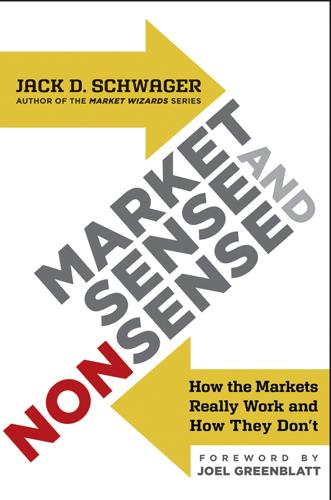
Market Sense and Nonsense
by
Jack D. Schwager
Published 5 Oct 2012
Although hedge funds don’t fully live up to their first name—they are significantly correlated with equities, especially during market liquidation episodes—they still provide much greater diversification than can be achieved within the long-only world, where different equity investments are usually extremely highly correlated. The Special Case of Managed Futures Managed futures are sometimes considered a subset of hedge funds and sometimes categorized to as a separate investment class. Managed futures refer to investments where the manager trades the futures and foreign exchange (FX) markets (FX is traded both through futures and the interbank markets). Managers who trade futures are referred to as commodity trading advisors (CTAs).
…
At one extreme, long-only hedge funds would be highly correlated with equities, and at the other extreme, short-selling strategies would be negatively correlated. Some strategies, such as global macro managed futures, are completely unrelated to equities and tend to have near-zero correlation over the long term. Most hedge fund strategies would have only moderate positive correlation to equities across most months. There is, however, one important exception: During flight-to-safety market liquidations, most markets and most hedge fund strategies (with the exception of highly liquid strategies, such as managed futures) will witness significant losses simultaneously. A classic example of such an event was the financial panic that gripped world markets in late 2008.
…
The one reason why it may be useful to think of managed futures as a separate investment class is that it is by far the most liquid hedge fund strategy. Liquidity refers to both the portfolio level and the investor level: Portfolio level. Most CTAs can easily liquidate their entire portfolio in a day, and often in minutes. Investor level. Redemption terms are usually the most investor friendly in the hedge fund spectrum, with monthly redemption (or better) the norm and investor gates2 a rarity. The liquidity of futures provides managed futures with a characteristic that differentiates it from most hedge fund strategies: Managed futures (including FX) are the one investment category that is immune to the “correlations going to one” phenomenon.

Living in a Material World: The Commodity Connection
by
Kevin Morrison
Published 15 Jul 2008
At that time though, Markowitz was still mainly focused on bonds and equities. The theory took another step in the early 1980s when Dr John Lintner of Harvard University concluded in his study that, ‘The combined portfolios of stocks, after including judicious investments in managed futures accounts, show substantially less risk, at every possible level of expected return, than portfolios of stocks (or stocks and bonds) alone’ (Lintner, 1983). For portfolio managers, futures provided an enhanced ability to sell short, which meant investors could make money when the markets fell. Another bonus was that there were lower transaction costs than with equity trading. 244 | LIVING IN A MATERIAL WORLD Among the first large pension funds to become involved in commodity investments were the Dutch government pension fund ABP, and PGGM, which manages the money for Dutch healthcare workers.
…
The remaining traders are monitoring the screens for the price of the US treasury contracts, a market that has almost entirely shifted to the computer terminal.2 The consequence of the shift in trading to electronic screens has meant the days of open outcry trading are numbered. The Chicago grain futures market has evolved into a global financial market; for managers of hedge funds, managed futures funds and pension funds, who have absolutely no interest in taking delivery of a tonne of wheat. It is the speculators in the pits who have found this transition the most painful. Once they earned their money from trading against the big players in the grains markets such as Cargill, Bunge and ADM.
…
Managed commodity funds can be traced back to 1948 when Futures Inc. was set up by Richard Donchian. Donchian is credited 238 | LIVING IN A MATERIAL WORLD with creating a marketing trading tactic known as ‘trend following,’ which is essentially based on the assumption that commodity prices move in long, sustained patterns. It’s a strategy adopted by programmed managed futures funds, otherwise known as Commodity Trading Advisors (CTAs), of which there are now thousands. The CTA is a misnomer; they do not now necessarily invest in commodities but in all classes of futures, including currencies, fixed interest and stock indices. The term harks back to the era prior to the launch of financial futures in the 1970s, and to the period when the only futures were commodities.
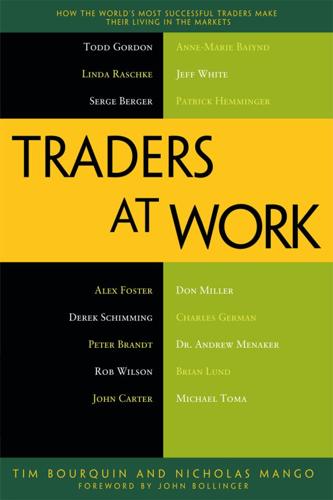
Traders at Work: How the World's Most Successful Traders Make Their Living in the Markets
by
Tim Bourquin
and
Nicholas Mango
Published 26 Dec 2012
Is using data really the only way to achieve long-term success in this business? German: I don’t know. You look at the long-term, managed futures guys who have been using trend-following strategies for years, and a lot of them make substantial, double-digit returns every single year when compounded over twenty-five or thirty years. On the other hand, I haven’t seen any evidence that a mutual fund manager can make 15 percent or 20 percent compound annual real returns over twenty-five years. If you know of any, then maybe you could tell me. But it’s just hard to deny the long-term performance of some of these managed futures guys. Bourquin: At some point along the way, you started managing money, correct?
…
(LEN) Lund, Brian daily charts day trading double-bottoms, ascending triangles economic announcements gambling and trading analogies gap trader high-frequency trading hybrid trader intraday charts larger swing chart moving average news announcement new traders part-time equities trader price and volume poker table positions profit target risk-reward ratio ROI percentage scale in and scale out Stanley, Morgan stocks basket support and resistance levels swing chart swing trading TC2000 technical analysis trading chat room trading mindset trading/poker analogies true traders weekly trade M Menaker, Andrew adverse effect algos auction automated trading Bollinger Bands fundamental analysis hedge fund high-frequency trading market profiling market sentiment momentum trading NYSE TICK psychological consultant risk-reward ratio S&P 500 social context supply and demand support and resistance trading psychology trend days volume occurrence volume profiling VWAP Miller, Don bankruptcy claims breakeven analysis CME member discounted rate schedule E-mini and S&P futures E-mini market ETF fluid market fund manager futures account futures contract futures market holding time human emotion intraday Jellie program jellyfish liquidity under bid under market provider liquid vehicles MACD market cycle market reading market trend market value MF Global account debacle momentum money back moving average PFG single trade speculation stabilization benefit support and resistance technical analysis technical charts Three-Line Break trade journal trading equities trading style vulture funds wholesale Money Talk bulletin boards Morgan Stanley (MS) Moving average convergence/divergence (MACD) N, O NASDAQ and S&P 500 National Futures Association (NFA) New York Stock Exchange (NYSE) Nonfarm payrolls (NFP) P, Q Pacific Coast Stock Exchange Peregrine Financial Group (PFG) Philadelphia Stock Exchange Poker analogy Producer Price Index (PPI) Purchasing Managers Index (PMI) R Raschke, Linda bear flags bond pit bull flags complex mechanical systems complex trade management strategies computer models CTA programs education E-mini S&P 500 futures futures market gamma trade hedge funds internet connections learning curve market maker market risk monetary goals multiple positions options arbitrage pit traders position exit pricing options professional traders S&P pit scale short-term scalpers software programs technical analysis technical chart technical programs trading floor trading place trail stops volatility and liquidity Russell 2000 S Schimming, Derek CCYX currency markets currency traders double tops and double bottoms entry point fifteen-and twelve-pip charts financial instrument fundamental background Monet effect money trading nonfarm payrolls announcement price-action players price-analysis view price-charting tools short-term time frame spot Forex trading stop loss support and resistance swing/position trader technical analysis trade opportunity trading strategy Simple moving average (SMA) SimplerOptions.com Small Order Execution System (SOES) T TheStockBandit.com Toma, Michael algorithmic program trading amateur trader arbitrary stop average retail trader backtesting bond future bond trader bond volume charts data-driven analytics edge effective journaling EMA and WMA E-mini S&P futures (ES) contract trader trade set-up equity index trader fund managers futures market trader HFT MACD market profile midday doldrums missing trade monthly assessment monthly report paper trading professional trader profit target psychology quantitative trader risk management risk/reward ratio secretariat set-up setups short-term trader six-tick stop player stop level support and resistance sweet spot technical analysis ten-year treasury bill trade plan trade targets trading software Trade on MasterCard TradeTheMarkets.com U US Department of Defense and Navy V Volume minus down volume ( UVOL-DVOL) Volume-weighted average price (VWAP) W, X, Y, Z Wealthy traders habits blown-up accounts buying and selling chart right side reading current trading methods decision making experienced traders goat milk good news higher-priced stock independent traders losing position make-my-month market bias market edge market makers minority ranks moving averages naked charts patient trade position size predict movement profit/loss exit retail traders right market environment share size short-term trade spot chart stock price support and resistance technical analysis trade setup trading books trading judgment trading plan trading reversals trading rules Weighted moving average (WMA) White, Jeff bear market bull market correlation daily market analysis entry and exit points equities trader favourable days full-time trading golf playing hedge fund home-based trading impatient traders local broker market environment mid-2000 mutual funds new investor own trading part-time trader playing chicken price and volume professional traders pullback buyers range-trading strategy retail firm swing trading time frames trade plan trading day structure trend lines wealth building wealthy traders Wilson, Rob ambition Bollinger bands British Royal Navy commander currency pairs currency trading economic announcement equity curve EUR/USD currency Forex trading full-time trader gold standard leverage losing trade management fees military training moving averages one-minute chart part-time traders pilot trade price points reinvest stop loss struggling trader support/resistance swings tend time frames trade margin trading bug trading unit volatile swings Wisdom of Crowds World Agricultural Supply and Demand Expectations (WASDE)
…
(LEN) Lund, Brian daily charts day trading double-bottoms, ascending triangles economic announcements gambling and trading analogies gap trader high-frequency trading hybrid trader intraday charts larger swing chart moving average news announcement new traders part-time equities trader price and volume poker table positions profit target risk-reward ratio ROI percentage scale in and scale out Stanley, Morgan stocks basket support and resistance levels swing chart swing trading TC2000 technical analysis trading chat room trading mindset trading/poker analogies true traders weekly trade M Menaker, Andrew adverse effect algos auction automated trading Bollinger Bands fundamental analysis hedge fund high-frequency trading market profiling market sentiment momentum trading NYSE TICK psychological consultant risk-reward ratio S&P 500 social context supply and demand support and resistance trading psychology trend days volume occurrence volume profiling VWAP Miller, Don bankruptcy claims breakeven analysis CME member discounted rate schedule E-mini and S&P futures E-mini market ETF fluid market fund manager futures account futures contract futures market holding time human emotion intraday Jellie program jellyfish liquidity under bid under market provider liquid vehicles MACD market cycle market reading market trend market value MF Global account debacle momentum money back moving average PFG single trade speculation stabilization benefit support and resistance technical analysis technical charts Three-Line Break trade journal trading equities trading style vulture funds wholesale Money Talk bulletin boards Morgan Stanley (MS) Moving average convergence/divergence (MACD) N, O NASDAQ and S&P 500 National Futures Association (NFA) New York Stock Exchange (NYSE) Nonfarm payrolls (NFP) P, Q Pacific Coast Stock Exchange Peregrine Financial Group (PFG) Philadelphia Stock Exchange Poker analogy Producer Price Index (PPI) Purchasing Managers Index (PMI) R Raschke, Linda bear flags bond pit bull flags complex mechanical systems complex trade management strategies computer models CTA programs education E-mini S&P 500 futures futures market gamma trade hedge funds internet connections learning curve market maker market risk monetary goals multiple positions options arbitrage pit traders position exit pricing options professional traders S&P pit scale short-term scalpers software programs technical analysis technical chart technical programs trading floor trading place trail stops volatility and liquidity Russell 2000 S Schimming, Derek CCYX currency markets currency traders double tops and double bottoms entry point fifteen-and twelve-pip charts financial instrument fundamental background Monet effect money trading nonfarm payrolls announcement price-action players price-analysis view price-charting tools short-term time frame spot Forex trading stop loss support and resistance swing/position trader technical analysis trade opportunity trading strategy Simple moving average (SMA) SimplerOptions.com Small Order Execution System (SOES) T TheStockBandit.com Toma, Michael algorithmic program trading amateur trader arbitrary stop average retail trader backtesting bond future bond trader bond volume charts data-driven analytics edge effective journaling EMA and WMA E-mini S&P futures (ES) contract trader trade set-up equity index trader fund managers futures market trader HFT MACD market profile midday doldrums missing trade monthly assessment monthly report paper trading professional trader profit target psychology quantitative trader risk management risk/reward ratio secretariat set-up setups short-term trader six-tick stop player stop level support and resistance sweet spot technical analysis ten-year treasury bill trade plan trade targets trading software Trade on MasterCard TradeTheMarkets.com U US Department of Defense and Navy V Volume minus down volume ( UVOL-DVOL) Volume-weighted average price (VWAP) W, X, Y, Z Wealthy traders habits blown-up accounts buying and selling chart right side reading current trading methods decision making experienced traders goat milk good news higher-priced stock independent traders losing position make-my-month market bias market edge market makers minority ranks moving averages naked charts patient trade position size predict movement profit/loss exit retail traders right market environment share size short-term trade spot chart stock price support and resistance technical analysis trade setup trading books trading judgment trading plan trading reversals trading rules Weighted moving average (WMA) White, Jeff bear market bull market correlation daily market analysis entry and exit points equities trader favourable days full-time trading golf playing hedge fund home-based trading impatient traders local broker market environment mid-2000 mutual funds new investor own trading part-time trader playing chicken price and volume professional traders pullback buyers range-trading strategy retail firm swing trading time frames trade plan trading day structure trend lines wealth building wealthy traders Wilson, Rob ambition Bollinger bands British Royal Navy commander currency pairs currency trading economic announcement equity curve EUR/USD currency Forex trading full-time trader gold standard leverage losing trade management fees military training moving averages one-minute chart part-time traders pilot trade price points reinvest stop loss struggling trader support/resistance swings tend time frames trade margin trading bug trading unit volatile swings Wisdom of Crowds World Agricultural Supply and Demand Expectations (WASDE)
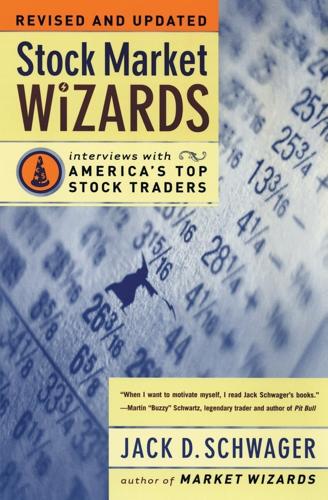
Stock Market Wizards: Interviews With America's Top Stock Traders
by
Jack D. Schwager
Published 1 Jan 2001
One day, I went down with Tim to meet with T H E U L T I M A T E TODING S Y S T E M some traders at Commodities Corporation. After that meeting, I told Tim, "Screw the retail money; let's go after institutional money." I cold-called Eastman Kodak. That initial call ultimately led to their opening a $50 million account—the largest investment ever in managed futures. They eventually upped their investment to $250 million. What did you know about managed futures? Nothing, but I did know enough to realize that it was a waste of time to call individuals and that it made a lot more sense to call institutions. Then how did you sell Kodak on the product? I told them, "Here is an investment that has no correlation with the stock market and has been compounding at about 30 percent per year."
…
I loved the job and did very well over the next few years. However, because of limitations that the company placed on me, I realized that if I wanted to take the next step, I would have to do something different. I decided to become a stockbroker. I was interviewed and hired by Shearson Lehman Brothers. While I was there, I met Tim Hoik, who was in managed futures—an area I knew absolutely nothing about. Tim had raised some retail money for Commodities Corporation. [At the time, Commodities Corporation had a group of in-house traders who managed the firm's proprietary funds as well as outside investor funds. Two of the traders I interviewed in Market Wizards—Michael Marcus and- Bruce Kovner—achieved their early success at Commodities Corporation.]
…
So, on your first sales call, you landed a $50 million account, and then you never made another sale again. It's hard to believe, but it's the honest-to-God truth. The Kodak account was my only source of income. Still, given the size of the account, you had to be doing pretty well. We were making a lot of money off the account, but the problem was that it was a typical managed futures account—up-and-down, upand-down—it was sickening to watch. The traders would make money, and then they would give it all back. I was concerned about losing the account because of all the volatility. So I started looking around for something else to do. Sometime around 1993, I became interested in a stock market newsletter written by a guy in Texas.
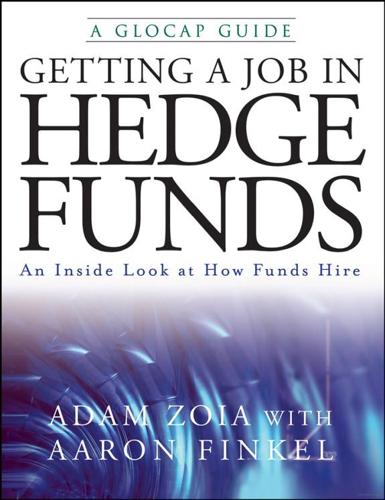
Getting a Job in Hedge Funds: An Inside Look at How Funds Hire
by
Adam Zoia
and
Aaron Finkel
Published 8 Feb 2008
Note: These funds seek to profit from changes in global economies, which are typically triggered by changes in government policy. These changes can affect interest rates and in turn may impact currency, stock, and bond markets. Global macro funds depend on their own fundamental macroeconomic research and often employ a top-down global approach. Managed Futures This strategy invests in listed financial and commodity futures markets and currency markets around the world. The managers are usually referred to as Commodity Trading Advisors (CTAs). Trading disciplines are generally systematic or discretionary. Systematic traders tend to use price- and market-specific information (often technical) to make trading decisions, while discretionary managers use a more judgmental or fundamental approach.
…
While quantitative strategies have sometimes produced stellar returns, there have also been some well-known failures of funds using this strategy. Some examples of funds that use quantitative investing strategies are statistical arbitrage, options arbitrage, fixed-income arbitrage, convertible bond arbitrage, mortgagebacked security arbitrage, derivatives arbitrage, equity market neutral, managed futures, and long/short funds. Sector-Specific Funds Some hedge fund managers may use any of the aforementioned strategies, but in doing so would focus investments on a specific sector of the market. Managers of these funds usually have both long and short equity positions. As with the strategies discussed earlier, the popularity of sector-specific funds can rise and fall with the markets—one year energy funds may be hot and outperform, and the next they will be out of vogue and real estate may be the sector of choice.
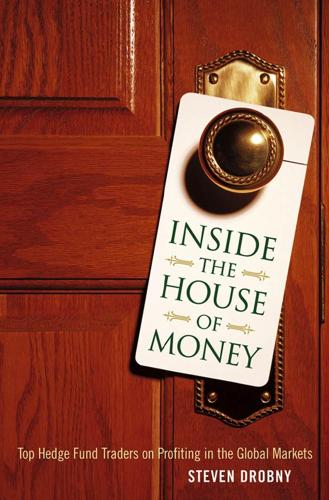
Inside the House of Money: Top Hedge Fund Traders on Profiting in a Global Market
by
Steven Drobny
Published 31 Mar 2006
Beams, Nick. “Russian Crisis Shakes Global Markets.” ICFI, August 25, 1998. Brown, Heidi, and John H. Christy.“Growing Pains.” Forbes, June 11, 2001. Burton, Katherine.“Paul Tudor Jones, Saying ‘Adapt or Die,’ Invests More.” Bloomberg Markets, May 3, 2004. Calabro, Seb, and Thomas Dobler. “Macro and Managed Futures: What Can They Add to Your Portfolio?” Goldman Sachs Conference Call Series, November 17, 2003. Caldwell, Ted, and Tom Kirkpatrick. A Primer on Hedge Funds. Lookout Mountain,TN: Lookout Mountain Capital, Inc., 1995. Cecchetti, S.G., H. Genberg, J. Lipsky, and S.Wadhwani. “Asset Prices and Central Bank Policy.”
…
“Hedge Funds Today: So Much Money, So Little Talent.” Wall Street Journal,August 24, 2005. CNNfn,“One More Soros Farewell,” June 9, 2000. Connor, Gregory, and Mason Woo. An Introduction to Hedge Funds. London: London School of Economics, 2003. Cottier, Philipp. “The Origin of Hedge Funds.” Hedge Funds and Managed Futures Bern: P. Haupt, 1997. Coy, Peter, and Suzanne Woolley.“The Failed Wizards of Wall Street.” BusinessWeek, September 21, 1998. 357 358 BIBLIOGRAPHY Craig, Susanne. “Goldman to Lose Two Traders.” Wall Street Journal, September 24, 2004. Dennis, Richard.“The Slower Fool Theory.” New Perspectives Quarterly, Fall 1987.
…
International Herald Tribune, December 2, 2000. Richards, Patsy. “Inflation: The Value of the Pound 1750–2001.” House of Commons Library Research Paper 02/44, July 11, 2002. Rosenblum, Irwin. Up, Down, Up, Down, Up. Philadelphia: Xlibris Corporation, October 2003. Säfvenblad, Patrik. “Global Macro and Managed Futures Strategies.” RPM Risk and Portfolio Management AB, October 1, 2003. Samuelson, Robert J. “The Risk Manager.” Washington Post, September 3, 2005. Savitz, Eric J.“GameTheory.” Barron’s, March 1, 2004. Skidelsky, Robert. “Commanding Heights,” interview by, PBS, July 18, 2000. Skidelsky, Robert. John Maynard Keynes: Hopes Betrayed 1883–1920.
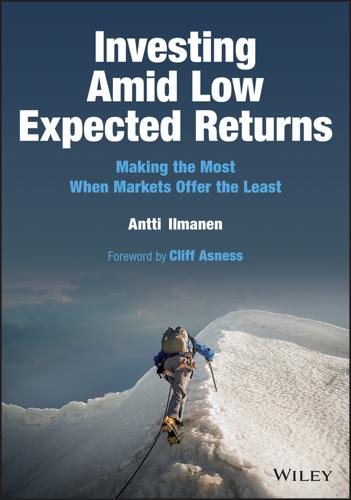
Investing Amid Low Expected Returns: Making the Most When Markets Offer the Least
by
Antti Ilmanen
Published 24 Feb 2022
Second, Garleanu-Pedersen (2018) is more optimistic on the possibility of asset owners earning positive net alpha. The competitive balance between asset owners and asset managers does matter and may result in fairer fee levels. Intuitively, while asset owners are seeking superior managers, asset managers are seeking investor capital in a world where both sides are uncertain about the manager's future alpha. Third, Pastor-Stambaugh-Taylor (2014) emphasizes the role of decreasing returns to scale; growing asset size at manager and industry level tends to reduce prospective alpha. 8 See Swedroe-Berkin (2015), Sullivan (2021), and Bollen-Joenvaara-Kauppila (2021) on hedge funds, Fama-French (2010) and Cremers-Fulkerson-Riley (2019) on mutual funds, Gerakos-Linnainmaa-Morse (2016) on institutional funds, Harris-Jenkinson-Kaplan (2014, 2016) on private equity funds, and AQR Portfolio Solutions Group (2018) on all.
…
“Expectations of returns and expected returns,” Review of Financial Studies 27(3), 714–746. Greenwood, Robin; Samuel G. Hanson; Joshua S. Rudolph; and Lawrence H. Summers (2014), “Government debt management at the zero lower bound,” Brookings Paper. Greyserman, Alex; and Kathryn Kaminski (2014), Trend Following with Managed Futures: The Search for Crisis Alpha, Wiley. Grinold, Richard C. (1989), “The fundamental law of active management,” Journal of Portfolio Management 15(3), 30–37. Grinold, Richard; and Ronald Kahn (1999), Active Portfolio Management: A Quantitative Approach for Producing Superior Returns and Controlling Risk, McGraw Hill.
…
Kahneman, Daniel; and Amos Tversky (1979), “Prospect theory: An analysis of decision under risk,” Econometrica 47(2), 263–291. Kahneman, Daniel; and Dan Lovallo (1993), “Timid choices and bold forecasts: A cognitive perspective on risk taking,” Management Science 39(1), 17–31. Kaminski, Kathryn (2011), “In search of crisis alpha: A short guide to investing in managed futures,” CME Group white paper. Kaplan Steven N.; and Antoinette Schoar (2005), “Private equity performance: Returns, persistence, and capital flows,” Journal of Finance 60, 1791–1823. Kaplan, Steven N.; and Per Strömberg (2009), “Leveraged buyouts and private equity,” Journal of Economic Perspectives 23(1), 121–146.
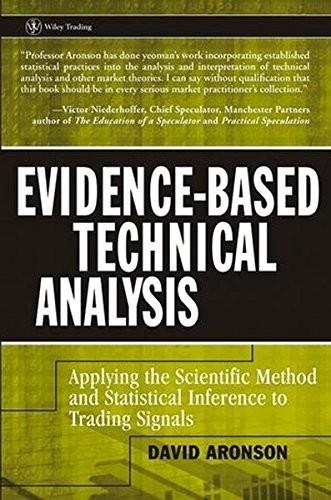
Evidence-Based Technical Analysis: Applying the Scientific Method and Statistical Inference to Trading Signals
by
David Aronson
Published 1 Nov 2006
Siegel, Stocks for the Long Run, 2nd ed. (New York: McGraw-Hill, 1998), 243. 19. G.R. Jensen, R.R. Johnson, and J.M. Mercer, “Tactical Asset Allocation and Commodity Futures: Ways to Improve Performance,” Journal of Portfolio Management 28, no. 4 (Summer 2002). 20. C.R. Lightner, “A Rationale for Managed Futures,” Technical Analysis of Stocks & Commodities (2003). Note that this publication is not a peer-reviewed journal but the article appeared to be well supported and its findings were consistent with the peer-reviewed article cited in the prior note. 21. P.-H. Hsu and C.-M. Kuan, “Reexamining the Profitability of Technical Analysis with Data Snooping Checks,” Journal of Financial Economics 3, no. 4 (2005), 606–628. 22.
…
Wolf, “Stepwise Multiple Testing as Formalized Data Snooping,” Econometrica 73, no. 4 (July 2005), 1237–1282. Note, this paper and many others use the term data snooping for what I refer to as the datamining bias. CHAPTER 7 Theories of Nonrandom Price Motion 1. C.R. Lightner, “A Rationale for Managed Futures,” Technical Analysis of Stocks & Commodities (March 1999). 2. Kepler actually proposed three distinct laws. 3. R.D. Edwards and J. Magee, Technical Analysis of Stock Trends, 4th ed. (Springfield, MA: John Magee, 1958). 4. J.J. Murphy, Technical Analysis of the Futures Markets: A Comprehensive Guide to Trading Methods and Applications (New York: New York Institute of Finance, 1999), 2. 5.
…
.; Notes 96. 97. 98. 99. 100. 101. 102. 103. 104. 105. 106. 107. 507 S. Grossman and J. Stiglitz, “On the Impossibility of Informationally Efficient Markets,” American Economic Review 70 (1980), 393–408. L. Jaeger, Managing Risk in Alternative Investment Strategies: Successful Investing in Hedge Funds and Managed Futures (London: Financial Times–Prentice Hall, 2002), 27. Gains from a true inefficiency are not a free lunch, because it is costly to identify them, but they need not entail the risk of additional volatility in returns. Thus true inefficiencies can generate investment performance with a high relative Sharpe ratio.

Asperger Syndrome and Alcohol: Drinking to Cope?
by
Matthew Tinsley
and
Sarah Hendrickx
Published 31 May 2008
The discovery and increasing understanding of their AS is rehabilitation in itself for most individuals, and provides an opportunity to find out who they really are and what they really need. This process of self-knowledge and acceptance of self can take a long time to assimilate, maybe even a year or two. It can be a complete re-assessment of what the person knew to be true but had no idea why. This new understanding of self may enable a more manageable future. Diagnosis The path to a funded diagnosis in the UK requires a referral from a GP to an appropriately qualified diagnostician – typically, a clinical psychologist or psychiatrist, who maybe based at a local (or not so local) hospital, or at a specialist AS clinic. When the person being referred is an adult, this person should be experienced in working with adults, as there are some differences in diagnosing children and adults.
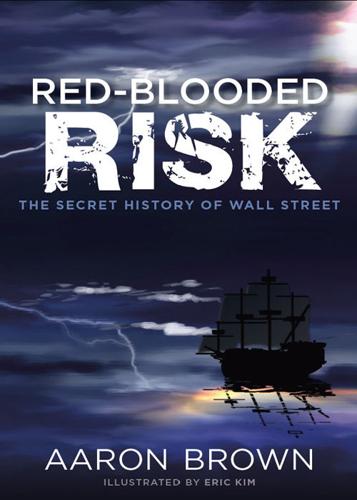
Red-Blooded Risk: The Secret History of Wall Street
by
Aaron Brown
and
Eric Kim
Published 10 Oct 2011
For example, in many markets prices have momentum. Securities that recently went up in price tend to continue up; securities that recently went down in price continue to go down. The market knows what the right price is, but cannot get there right away. There are many variants of momentum trading; the best known is called managed futures. It acquired this name because the strategy was first perfected by commodity futures traders, but it is applied today in all liquid asset classes. People disagree about why momentum exists, but it is much easier to explain as a disequilibrium than as a market inefficiency. The simplest story concerns the way information flows into market prices.
…
(Livio) Jackknife, the Bootstrap, and Other Resampling Plans, The (Efron) Jackpot Nation (Hoffer) Jessup, Richard John Bogle on Investing (Bogle) Johnson, Barry Johnson, Simon JPMorgan Junk bonds Kahneman, Daniel Kamensky, Jane Kaplan, Michael Kassouf, Sheen Kelly, John Kelly bets/levels of risk Kelly principles/investors Keynes, John Maynard Key performance indicators (KPIs) Key risk indicators (KRIs) King of a Small World (Bennet) Korajczyk, Robert Knetsch, Jack Knight, Frank Kraitchik, Maurice Krüger, Lorenz Laplace, Pierre-Simon Lehman Brothers Leitzes, Adam Lepercq de Neuflize Leverage Levine, David Levinson, Horace Lewis, Michael Limits of Safety, The (Sagan) Liquidity Livio, Mario Logic of Failure, The (Dorner) Long-Run Collaboration on Games with Long-Run Patient Players, A (Fudenberg and Levine) Loss aversion Lowenstein, Roger Mackay, Charles Madoff, Bernie Mallaby, Sebastian Man with the Golden Arm, The (Bennet) Managed futures Managing risk Mandelbrot, Benoit Market: “beating” the efficiency (see also Efficient markets theory) equilibrium (see Equilibrium) portfolio prices return sympathy Mark-to-market accounting Markowitz, Harry. See also Modern portfolio theory (MPT) McLean, Bethany McMahon, Darrin McManus, James Medici Money (Park) Mehrling, Perry Merck Merrill Lynch Merton, Robert Mezrich, Ben Middle office Mihm, Stephen (Mis)behavior of Markets, The (Mandelbrot) Modern portfolio theory (MPT) Momentum investors Momentum trading Money.
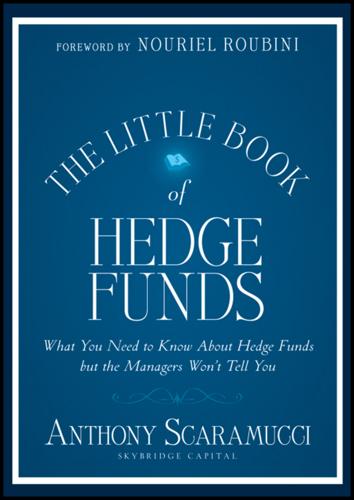
The Little Book of Hedge Funds
by
Anthony Scaramucci
Published 30 Apr 2012
Unlike the strategies just discussed, these strategies do not provide a hedge against market risk; rather they seek to preserve capital and earn absolute returns by taking advantage of global market trends and the direction of movements in the financial market. Strategies within this classification include: Global Macro Funds Managed Futures Global Macro Funds When I think of the global macro hedge fund managers, I always seem to imagine the same scenario: a group of contrarians, pacing back and forth in a war room as they try to assess every price movement that is going on in real time around the planet. Interest rate movements, commodity prices, currencies, stocks, and bonds—basically everything on the Earth that trades!
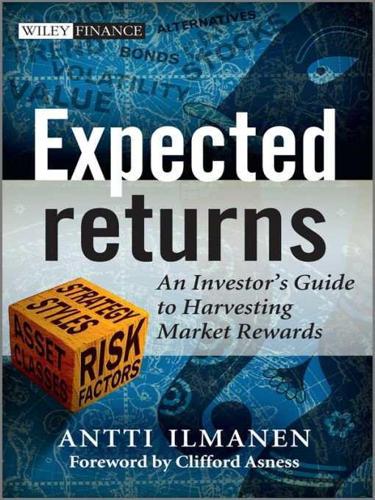
Expected Returns: An Investor's Guide to Harvesting Market Rewards
by
Antti Ilmanen
Published 4 Apr 2011
It includes infrastructure, timber, and farmland; art and other collectibles (fine wines, rare coins, stamps); and more novel securities such as catastrophe bonds, carbon credits, intellectual property rights, viatical or life insurance settlements, longevity swaps, and others. If hedge funds can be characterized as an asset class, then the list of alternatives may be extended to include managed futures (typically momentum-oriented commodity-trading advisors or CTAs), global tactical asset allocation managers (typically value-oriented investors), active FX, volatility trading, alternative betas and hedge fund replication, as well as investments focused on corporate governance, sustainable development, and shareholder activism.
…
The bias is milder for value-weighted averages because backfilling is more often done by small young funds. While many studies make adjustments for survivorship and backfill biases, few studies are able to quantify selection, liquidation, lookback, and lookahead biases. Box 11.4. CTA performance Commodity trading advisors (CTAs) or managed futures may be viewed either as a subset of HFs or as a distinct but close cousin. Unlike most HFs, CTAs tend to be systematic and focus on trend following (diversifying across a large number of liquid assets and both fast and slow models). Chapter 14 discusses simulated trend-following strategies. Bhardwaj–Gorton–Rouwenhorst (2008) present a scathing analysis of CTA performance, titled “Fooling some of the people all the time”.
…
Moreover, it is hard to argue that momentum strategies deserve a high rationally required risk premium when these strategies actually are great diversifiers. During financial crises such as 1998 and 2008, these strategies were among the few solid performers. Many empirical studies show that momentum strategies and CTAs (managed futures funds that focus on trend following) have negative or low correlations with equity markets and with value, carry, and reversal strategies. These other strategies tend to be empirically “short volatility” whereas momentum strategies and CTAs tend to be empirically “long volatility”:• The payoff profile of trend-followers resembles that of an unhedged long straddle position.
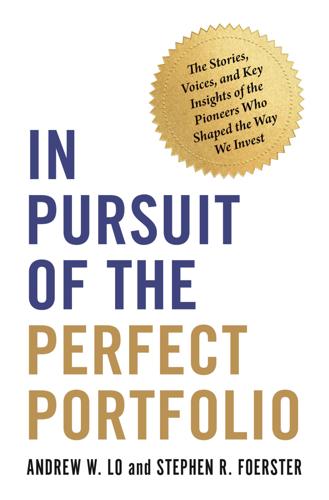
In Pursuit of the Perfect Portfolio: The Stories, Voices, and Key Insights of the Pioneers Who Shaped the Way We Invest
by
Andrew W. Lo
and
Stephen R. Foerster
Published 16 Aug 2021
“I was able to take a more realistic model, a more general model, and show that the outcomes were interesting.”31 Around 1969, as Merton neared the completion of his dissertation, Samuelson nominated him to be a junior fellow at Harvard. However, Merton was rejected for that position, so he continued on to the regular academic job market, interviewing at numerous economics departments. Merton was able to get a job at MIT, not in the economics department but rather at the Sloan School of Management. Future economics Nobel winner Franco Modigliani, who had cross-appointments in both the economics department and at Sloan, made the invitation and convinced Merton that he could teach at Sloan even though he had no formal finance training. “Things were going very well,” Merton recalled from his office at MIT Sloan more than four decades later.
…
See also Black-Scholes/Merton option-pricing formula overvaluation: Shiller on, 303–4; of technology sector, Siegel on, 295–98 Ownership Society Bubble, 241 paper currency, 6 passive management: advocates of, 321; Scholes on, 147 path to the Perfect Portfolio, 323, 331–33 pension managers, 214 Perfect Portfolios, 134–39, 308–33; active vs. passive management and, 321; adaptive markets hypothesis and, 320; of Bogle, 134–39, 312–13; differences among, 321; of Ellis, 276–80, 318; of Fama, 111–12, 312; lack of consensus on, 308; of Leibowitz, 221–25, 316–17; of Markowitz, 43–50, 309–11; of Merton, 192–98, 314–16; principles of constructing, 323–26; process of constructing, 323, 326–31; risk and, 321; of Scholes, 166–72, 313–14; of Sharpe, 78–80, 311–12; of Shiller, 251–54, 317–18; of Siegel, 305–7, 318–19; taxes and, 322; Treasury Inflation-Protected Securities and, 322 performance investing, Ellis on, 261–62, 273–74 Pfleiderer, Paul, 158 Phillips Exeter Academy, 256 Pierce, Franklin, 256 Porter, Richard, 234–35 “Portfolio Analysis Based on a Simplified Model of the Relationships among Securities” (Sharpe), 56 portfolio management: future of, 50; Markowitz’s interest in, 24; pioneers of, overview of, ix–xi. See also specific topics “Portfolio Operations” (Ellis), 262 portfolio risk formula, Markowitz’s discovery of, 25–26 “Portfolio Selection” (Markowitz), 27–34 portfolio selection: importance of Markowitz’s contribution to, 44–45; Markowitz’s book on, 39–41; as Markowitz’s dissertation topic, 27–34; work preceding Markowitz’s work on, 35–39 Portfolio Selection: Efficient Diversification of Investments (Markowitz), 39–41, 54 portfolio theory, Marschak and, 35 Portfolio Theory and Capital Markets (Sharpe), 73 Pre-Pottery Neolithic period trade, 1–2 Prescott, Edward, 230, 288–89 prestito, 7 price-earnings (P/E) ratio, 246, 291; cyclically adjusted (see cyclically adjusted price-to-earnings (CAPE) ratio); equity premium and, 291; lower-risk premiums and, 238; Shiller on, 303; Siegel on, 297–98, 299, 302, 303, 305, 306, 307; speculative return and, 133–34; target, in 1719 France, 11 price-to-earnings (P/E) multiple, of Mississippi Company, 11 “The Pricing of Options and Corporate Liabilities” (Black and Scholes), 157 Primecap Fund, 135 Primerica, 346n5 principles of constructing a Perfect Portfolio, 323–26 process of constructing a Perfect Portfolio, 323, 326–31 prospect theory, 42–43 pure yield pickup swaps, 211 Qin Shi Huangdi, 5 Rainwater, James, as Nobel Prize winner, 174 Ramo, Simon, 264–65, 362n34 RAND Corporation, 39, 340n77 The Random Character of Stock Market Prices (Cootner), 83 A Random Walk Down Wall Street (Malkiel), 276 random walks, 82–83, 88–89, 93–94 “Random Walks in Stock-Market Prices” (Fama), 93–94 Rashomon effect, 308 rate anticipation swaps, 211 rational expectations, 344n28; Shiller on, 229–30, 232–34 “Rational Expectations and the Structure of Interest Rates” (Shiller), 230 rationality, critics of, 83–84 Reagan, Ronald, 236 rebalancing, Bogle on, 135–36 “Religion and Science” (Einstein), 227 reputation, importance of, 3–4 retirement, baby boomer, Siegel on effect on investor portfolios, 299–300 retirement planning: asset-liability management and, 214–15; inflation and, 224; Merton’s work in, 192–93, 194–97; Sharpe’s interest in, 75–76; target date funds for, 224 risk: adaptive markets hypothesis and, 320; capital asset pricing model and (see capital asset pricing model (CAPM)); differing approaches to, 321; dragon, 221; Ellis on, 268; endowment model and, 220–21; Leibowitz on, 216–18, 220–21, 224, 316–17; MacroShares and, 251; Markowitz on, 25–26, 310; Merton on, 192–93; portfolio risk formula and, 25–26 (see also modern portfolio theory (MPT)); Scholes on, 167, 171–72, 313–14; Sharpe’s expansion on Markowitz’s approach to, 56; Siegel on, 294–95.
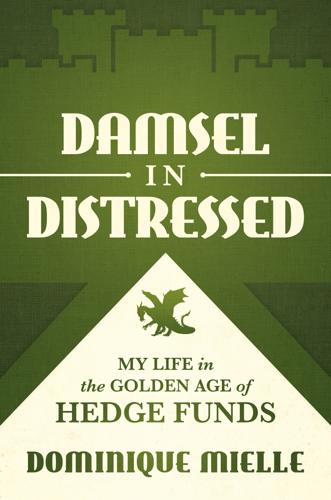
Damsel in Distressed: My Life in the Golden Age of Hedge Funds
by
Dominique Mielle
Published 6 Sep 2021
The truth is that hedge funds were not supposed to produce superior relative returns; the goal was to produce persistent absolute positive returns. To be hedged means to deliver profit regardless of the direction of the market, as was the case during the telecom crisis. Hedge funds did not deliver on that promise in 2008. Every hedge fund category but one (managed futures, a subset so nebulous that I really have no clue what they do) produced a negative return. Changing the Model 2008 did not just shake investors, it also provided a wake-up call to hedge fund managers. They realized how fragile and unstable the existing business model was. The crisis served as a catalyst for the entire industry to seek scale and diversification rather than reside within specialization and nimbleness.
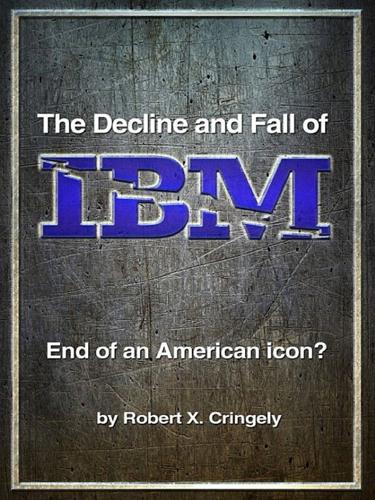
The Decline and Fall of IBM: End of an American Icon?
by
Robert X. Cringely
Published 1 Jun 2014
The problem is in the execution: Pay the consultants big bucks going in, then drop them half-way through the conversion; execute the conversion done in hurry-up mode with no prior thought given to infrastructure; ensure that every team is isolated and will stumble across the same common problems one by one and then invent their own set of solutions which probably won't interface smoothly with any other team's (or management's future requirements); schedule a workforce reduction just as the teams are beginning to build those solutions; schedule week-long mandatory face-to-face team kickoff meetings but only at the last minute so the travel budget is blown on high-dollar airfares; hit the paying customers first instead of IBM's traditional method of tasting our own cooking before laying it on the public table; change the customer interface week-by-week as the teams try to adapt again and again; measure progress solely in terms of resource reduction, dropping all pretense of measuring anything relating to effectiveness or customer satisfaction; chase away customers instead of training the marketing staff to make and hold to good costing decisions.

The Handbook of Personal Wealth Management
by
Reuvid, Jonathan.
Published 30 Oct 2011
Advisory portfolio management, on the other hand, tends to be designed for clients wishing to retain more control over investment decisions – a more ‘hands-on’ approach. Figure 1.1.4, Investment involvement, shows a broad representation of the types of services differentials that exist between discretionary and advisory approaches. _________________________________________________ THE EYE OF THE NEEDLE 11 ឣ HFs: Macro/Managed Futures 6.0% HFs: Equity Long/short 2.4% Fixed Income – Inv. Grade (International) 18.2% HFs: Relative Value/Event Driven 8.4% Fixed Income – Inv. Grade (Local) 10.2% Fixed Income – High Yield 2.1% Equity 52.6% 11.0 0% Illiquidity 10% Illiquidity 20% Illiquidity 30% Illiquidity Expected Return (%) 10.0 9.0 Model V Model IV Model III 8.0 Model II 7.0 6.0 Model I 5.0 For Illustration Only 4.0 2.0 4.0 6.0 8.0 10.0 12.0 14.0 16.0 Expected Standard Deviation (%) Source: Citi Private Bank as at December 2008 Figure 1.1.3 Illustration line of optimal portfolio ‘fits’ This is provided as a generic illustration only and differences between service offerings will vary.
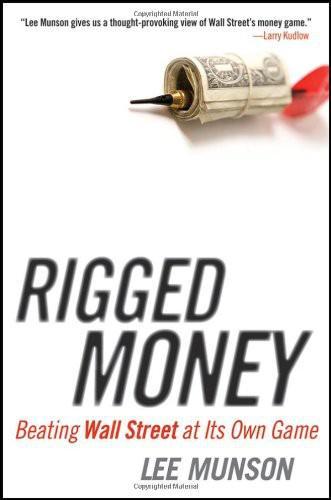
Rigged Money: Beating Wall Street at Its Own Game
by
Lee Munson
Published 6 Dec 2011
Unlike the GSCI, which lets the positions float and has a 60 percent max weighting, the Dow Jones-UBS Grains index has a max weighting of 33 percent. Over the last 10 years the difference between the Dow Jones and GSCI is that oil has become an overwhelming part of the GSCI Index, contributing to better 10-year numbers. Mutual fund companies love to use the GSCI for particular time periods to sell managed futures funds without fully explaining that the numbers are mostly attributed to a run in oil, not a well-diversified commodity basket like the Dow Jones Index. You would think that we would see some tracking error between the two ETNs. In fact, we see few differences between the two. Overlay the charts and they are twins.
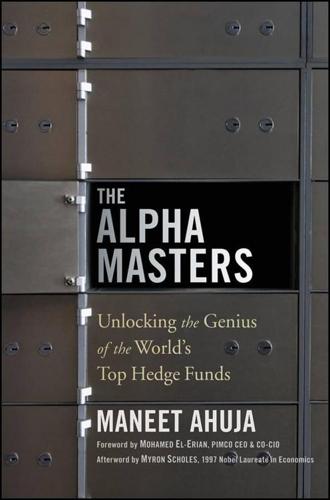
The Alpha Masters: Unlocking the Genius of the World's Top Hedge Funds
by
Maneet Ahuja
,
Myron Scholes
and
Mohamed El-Erian
Published 29 May 2012
Opened as a sugar brokerage by barrel maker James Man in 1783, the company’s first break came a year later when Man won the contract to provide rum to the Royal Navy (the service’s tradition, by which each sailor received a tot of rum daily, was observed until 1970, with Man holding the contract for the entire time). Over the years, the company evolved into the commodities trading firm ED&F Man (which continues in business as a separate entity), and then, through astute acquisition of managed-futures traders and fund-of-funds operations, celebrated its bicentennial with its first acquisition of a hedge fund, New York’s Mint Investment Management Co. By the end of the decade, the company had a billion dollars in assets. The flagship of Man’s operation, with $23.6 billion in assets, is AHL.
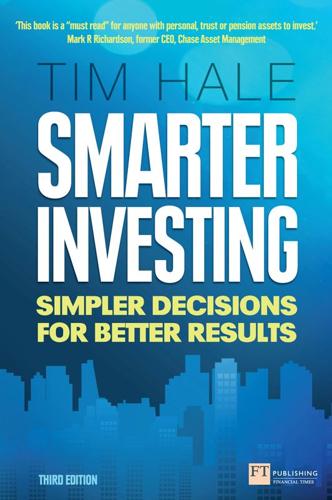
Smarter Investing
by
Tim Hale
Published 2 Sep 2014
Winning the Loser’s Game, 2nd, 3rd emerging markets defining diversification benefits, 2nd economies MSCI Emerging Markets Index portfolio construction, 2nd, 3rd, 4th, 5th, 6th product choices, 2nd, 3rd benchmarks return and risk characteristics, 2nd, 3rd future returns past returns rise in correlations between EMH (Efficient Market Hypothesis) emotional decision-making, 2nd, 3rd, 4th, 5th, 6th emotional tolerance for losses Equitable Life equities efficient equity markets global developed markets diversification, 2nd, 3rd, 4th, 5th, 6th fund costs product choices benchmarks and investment behaviour and the investment mix, 2nd, 3rd lump-sum investments in and market timing, 2nd, 3rd risk, 2nd, 3rd stock selection UK active funds equity markets developed diversifiers, 2nd risk, 2nd volatility of equity risk premium equity-oriented assets ETFs (Exchange Traded Funds), 2nd, 3rd, 4th, 5th and DIY investors, 2nd, 3rd, 4th taxes and inflation-linked bonds providers, 2nd eye-openers for investors Fama, Eugene Fidelity, 2nd, 3rd, 4th, 5th FinaMetrica, 2nd, 3rd financial advisers see advisers financial survival goals, 2nd and different levels of need five steps in defining general goals for individuals fixed income securities, 2nd Ford, Henry, 2nd FSA (Financial Services Authority) and commodity futures FTSE 100 Index, 2nd and structured products, 2nd FTSE All-Share Index, 2nd, 3rd, 4th, 5th FTSE Index-Linked gilts fund management/managers average choosing costs, 2nd, 3rd performance, 2nd turnover on funds and UK investor behaviour see also active management/managers futures contracts gambling gilts, 2nd, 3rd, 4th, 5th, 6th and global equity markets index-linked global equities developed markets, risk and return diversification, 2nd, 3rd, 4th, 5th, 6th fund costs product choices benchmarks global real estate see REITs (global real estate) goals see financial survival goals gold Graham, Benjamin, 2nd Halifax UK FTSE All Share Index Tracking Fund Hargreaves Lansdown hedge funds, 2nd, 3rd and leverage history of the financial industry home bias, 2nd product choices Homer, Sidney implementation, 2nd, 3rd DIY or advisers product choices, 2nd risk income and DIY investors index funds, 2nd, 3rd, 4th and DIY investors guidelines for selecting index-fund investing and portfolio construction trackers vs active investors, 2nd, 3rd tracking error index investors index-linked bonds, 2nd India inflation and bond yields inflation-linked investments portfolio construction and long-term investors and savers and structured products inflation-linked bonds, 2nd, 3rd information ratio insights Institute of Financial Planning insurance premiums and commodity futures intuitive decision-making investment behaviour, 2nd, 3rd emotional, 2nd, 3rd, 4th, 5th, 6th see also behavioural finance investment horizon and portfolio choices investment period investment philosophy, 2nd and advisers establishing foundations of and market timing, 2nd, 3rd, 4th philosophy-free investing research evidence rules security selection see also active management/managers investment professionals trying to beat the market investment strategy see market timing investment trusts, 2nd private equity IRR (internal rate of return) and private equity ISAs and taxation iShares Kahneman, Daniel Keynes, J.
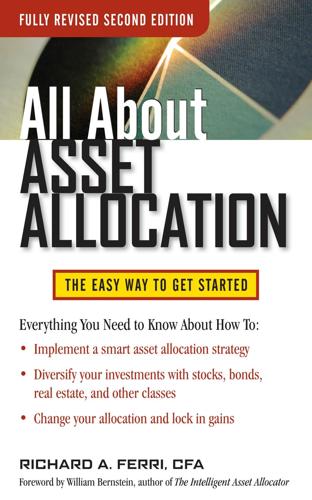
All About Asset Allocation, Second Edition
by
Richard Ferri
Published 11 Jul 2010
The number of strategies is limited only by the imagination of people in the investment industry. TA B L E 10-3 Hedge Fund Categories and Strategies Arbitrage Strategies Event-Driven Strategies Directional/Tactical Strategies Fixed-income arbitrage Convertible arbitrage Special situations Mergers and acquisitions Distressed securities Venture capital Equity long/short Managed futures (CTA) Macro strategies Alternative Investments 209 The Problem with Hedge Funds Hedge funds have a certain sex appeal. The secretive nature of the business, the allure of high potential returns, and the low correlation with stocks and bonds—it is all very enticing. However, in this author’s opinion, much of the hype surrounding the role of hedge funds in a portfolio is misplaced.

Against Everything: Essays
by
Mark Greif
Published 5 Sep 2016
Here are the names of some significant bands, post-2004: Grizzly Bear, Neon Indian, Deerhunter, Fleet Foxes, Department of Eagles, Wolf Parade, Band of Horses, and, most centrally, Animal Collective. (On the electronic-primitive side, LCD Soundsystem.) Listeners heard animal sounds and lovely Beach Boys–style harmonies; lyrics and videos pointed to rural redoubts, on wild beaches and in forests; life transpired in some more loving, spacious, and manageable future, possibly of a Day-Glo or hallucinatory brightness. It was not unheard of to find band members wearing masks or plush animal suits. Where the White Hipster was relentlessly male, crowding out women from public view (except as Polaroid muses or Suicide Girls), the Hipster Primitive feminized hipster markers; one spoke now of headdresses and Sally Jessy Raphael glasses, not just male facial hair.

Mathematics of the Financial Markets: Financial Instruments and Derivatives Modelling, Valuation and Risk Issues
by
Alain Ruttiens
Published 24 Apr 2013
collars collateralized debt obligations (CDOs) color sensitivity commodities commodity futures backwardation contango market price non-financial producers/users trading calculations conditional swaps Conditional VaR (C-VaR) confidence levels constant maturity swaps (CMSs) contango continuous interest compounding continuous interest rates continuous time continuous variables contracts contracts for difference (CFD) contribution, performance convenience yield conversion factors (CFs) convertible bonds (CBs) bond floor CB premium conversion ratio Hard Call protection outcome of operation pricing graph risk premium stock price parity convexity adjustments see also bond convexity copper prices copulas correlation basket options credit derivatives implied Portfolio Theory Spearman’s coefficient VaR calculations volatility counterparty risk futures see also credit risk counter-value currency (c/v) Courtadon model covered period, FRAs Cox, Ingersoll and Ross model Cox–Ross–Rubenstein (CRR) model credit default swaps (CDSs) on basket cash settlement with defined recovery rate market operations variants credit derivatives CDSs credit risk main features valuation application example basket derivatives binomial model CDO pricing correlation measures credit risk models useful measures Merton model “credit events” credit exposure credit risk behind the underlying components data use dangers default rates Merton model models in practice quantification recovery rates credit VaR crossing CRR see Cox–Ross–Rubenstein model CRSs see currency rate swaps crude oil market CTD see cheapest to deliver cubic splines method currencies futures options performance attribution spot instruments currency rate swaps (CRSs) c/v see counter-value currency C-VaR see Conditional VaR D see discount factors DCF see discounted cash flows method decision-making deep ITM (DITM) deep OTM (DOTM) default rates default risk see credit risk delta delta-gamma neutral management delta-normal method, VaR derivatives credit valuation problems volatility Derman see Black, Derman, Toy process deterministic phenomena diff swaps diffusion processes Dirac functions dirty prices discounted cash flows (DCF) method discount factors (D) duration D forward rates IRSs risk-free yield curve spot rates yield curve interpolations discrete interest compounding discrete time discrete variables DITM see deep ITM DOTM see deep OTM drift duration of bonds see bond duration duration D dVega/dTime dynamic replication see delta-Gamma neutral management dZ Black–Scholes formula fractional Brownian motion geometric Wiener process martingales properties of dZ(t) standard Wiener process economic capital ED see exposure at default effective duration, bonds efficient frontier efficient markets EGARCH see exponential GARCH process EONIA see Euro Over-Night Index Average swaps equities forwards futures Portfolio Theory stock indexes stocks valuation EUR see Euros EURIBOR rates CMSs EONIA/OIS swaps FRAs futures in-arrear swaps IRSs quanto/diff swaps short-term rates Euro Over-Night Index Average (EONIA) swaps European options basket options bond options caplets CRR pricing model exchange options exotic options floorlets Monte Carlo simulations option pricing rho Euros (EUR) CRSs forward foreign exchange futures spot market swap rate markets volatility Euro Stoxx EWMA see exponentially weighted moving average process Excel functions MA process Monte Carlo simulations excess return exchange options exotic options basket options Bermudan options binomial pricing model Black–Scholes formula currency options exchange options interest rates Monte Carlo simulations options on bonds options on non-financial underlyings PFCs pricing methods see also second generation options exotic swaps see also second generation swaps expected credit loss expected return exponential GARCH (EGARCH) process exponentially weighted moving average (EWMA) process exposure at default (ED) fair price/value “fat tails” problem financial models ARCH process ARIMA process ARMA process AR process GARCH process MA process MIDAS process finite difference pricing methods fixed leg of swap fixed rate, swaps floating rate notes/bonds (FRNs) floating rates floorlets floors forecasting ARIMA ARMA process AR process MA process foreign exchange (FX) see currencies; forex swaps; forward foreign exchange forex (FX) swaps forward foreign exchange 1 year calculations forex swaps forward forex swaps forward-forward transactions forward spreads NDF market operations forward rate agreements (FRAs) forwards Black–Scholes formula bonds CFDs CRSs equities foreign exchange FRAs futures vs forwards prices options PFCs rates swaps volatility forward zero-coupon rate 4-moments CAPM fractional Brownian motion FRAs see forward rate agreements FRNs see floating rate notes/bonds futures bonds commodities currencies equities forwards vs futures prices IRR margining system market price option pricing pricing settlement at maturity short-term interest rates stock indexes theoretical price future value (FV) bond duration short-term rates spot rates zero-coupon swaps FX see foreign exchange; forex swaps gain-loss ratio (Bernardo Ledoit) gamma gamma processes GARCH see generalized ARCH process Garman–Klass volatility Gaussian copulas Gaussian distribution Gaussian hypothesis generalized ARCH (GARCH) process EWMA process I/E/MGARCH processes non-linear models regime-switching models variants volatility general Wiener process application fractional Brownian motion gamma processes geometric Wiener process Itô Lemma Itô process jump processes volatility modeling see also standard Wiener process geometric average geometric Wiener process German Bund see Bund (German T-Bond) global VaR Gordon–Shapiro method government bonds Greece Greeks see sensitivities Hard Call protection Heath, Jarrow and Morton (HJM) model Heaviside function hedging bond futures delta-gamma neutral management futures 129–30 immunization vs hedging money market rate futures stock index futures heteroskedasticity hidden layers, NNs high frequency trading “high” prices historical method, VaR historical volatility HJM see Heath, Jarrow and Morton model Ho and Lee model Hull and White model Hurst coefficient IGARCH see integrated GARCH process immunization implied correlation implied repo rate (IRR) implied volatility definition historical volatility surface volatility curves volatility smiles in-arrear swaps indexes basket options capitalization-weighted price/value-weighted see also stock indexes inflation-linked bonds inflation swaps Information Ratio (IR) initial margin in the money (ITM) caps convertible bonds deep ITM options innovation term, AR instantaneous returns integrated GARCH (IGARCH) process interbank rates see EURIBOR rates; LIBOR rates interest rate options BDT process Black and Karasinski model caps collars floors forward rates HJM model LMM model single rate processes swaptions yield curve modeling interest rates day counting discount factors futures FV/PV interest compounding IRSs options short-term spot rates term structure see also yield interest rate swaps (IRSs) bond duration and CRSs fixed/floating rates pricing methods prior to swap pricing method revaluation vanilla swaps yield curve see also constant maturity swaps intermediate period, FRAs International Swaps and Derivatives Association (ISDA) intraday margining settlements intraday volatility investor decision-making IR see Information Ratio IRR see implied repo rate IRSs see interest rate swaps ISDA see International Swaps and Derivatives Association ITM see in the money Itô process Itô’s Lemma Japanese yen (JPY) Jarrow, Robert A.

Nation-Building: Beyond Afghanistan and Iraq
by
Francis Fukuyama
Published 22 Dec 2005
Training The U.S. government requires the capacity to prepare agency officials for the responsibilities they will be expected to take on in planning and managing agency efforts in a complex contingency operation. Creating a cadre of professionals familiar with this integrated planning process will improve the U.S. government’s ability to manage future operations. In the interest of advancing the expertise of government officials, agencies are encouraged to disseminate the Handbook for Interagency Management of Complex Contingency Operations published by the National Defense University in January 2003. With the support of the State and Defense Departments, the PDD requires the NSC to work with the appropriate U.S. government educational institutions—including the National Defense University, the National • 101 • • Michèle A.
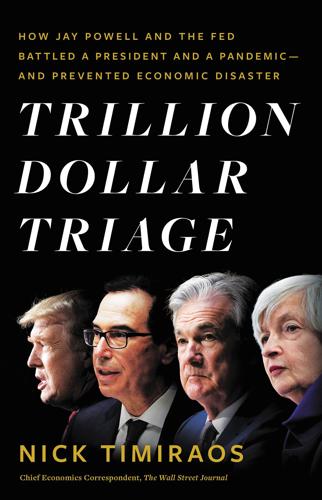
Trillion Dollar Triage: How Jay Powell and the Fed Battled a President and a Pandemic---And Prevented Economic Disaster
by
Nick Timiraos
Published 1 Mar 2022
They failed spectacularly, causing a run on the lenders that had financed the scheme, which in turn instigated a more generalized panic. Over the next few weeks, New York City’s third-largest trust and numerous regional banks failed. The crisis subsided only after the financier J. P. Morgan put up a large sum of his own money to stabilize banks. Relying on the country’s wealthiest citizens to manage future crises was clearly no way to run a national financial system. Lawmakers began a series of negotiations, encouraged by Wall Street financiers, which in 1913 led to the creation of America’s own central bank: the Federal Reserve. From its beginning, the Fed was criticized by populists as too close to wealthy banking interests, but the institution was also relatively weak.

A Demon of Our Own Design: Markets, Hedge Funds, and the Perils of Financial Innovation
by
Richard Bookstaber
Published 5 Apr 2007
For example, the Standard & Poor’s Hedge Fund Index has three styles: arbitrage, event-driven, and directional/tactical. Each of these styles has three strategic subsets. Arbitrage consists of equity market neutral, fixed income arbitrage, and convertible arbitrage; event-driven has merger arbitrage, distressed, and special situations; directional/tactical has long/short equity, managed futures, and macro. The problem with this sort of classification, based as it is strictly on the trading style or strategy type, is that it has to be revised over time as new strategies emerge and existing ones fail. An alternative classification matrix, which I developed in 2001, attempts to overcome this problem, but in so doing reveals the existential issue for hedge funds.1 This approach classifies hedge funds by five characteristics: 1.
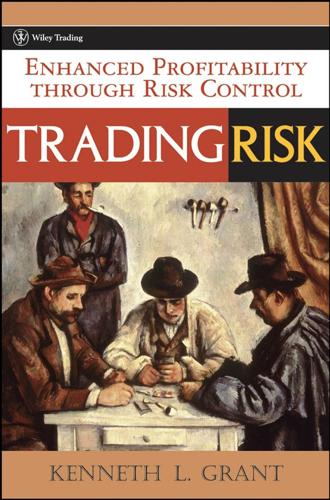
Trading Risk: Enhanced Profitability Through Risk Control
by
Kenneth L. Grant
Published 1 Sep 2004
By comparing the worst of these to 72 TRADING RISK your annual returns, you provide yourself with a uniquely effective manner in which to express the risks and rewards in your portfolio, one that does not rely in any way, shape, or form on assumptions about the distribution of your returns. For many professional trading accounts, including those tied to feebased structures typically associated with the hedge funds and managed futures, portfolio managers are only paid for incremental performance. One very meaningful implication of this is that between periods where returns are calculated, if you are operating under this framework, you will not be paid for the revenues you have earned in recovering from a drawdown. This, in turn, has important implications for portfolio management.

Naked Economics: Undressing the Dismal Science (Fully Revised and Updated)
by
Charles Wheelan
Published 18 Apr 2010
Analysts provide all kinds of legitimate information, just like your real estate agent. When you are shopping for a home, your agent can tell you about neighborhoods, schools, taxes, crime—the kinds of things that matter. Wall Street analysts do the same things for companies; they report on management, future products, the industry, the competition. But that does nothing to guarantee that you are going to earn an above-average return on the stock. The problem is that everyone else has access to the same information. This is the essence of the efficient markets theory. The main premise of the theory is that asset prices already reflect all available information.

World Cities and Nation States
by
Greg Clark
and
Tim Moonen
Published 19 Dec 2016
Although, unlike other world cities, Singapore does not have development spillover within its national territory, it does face the task of building a constructive and complementary relationship with Indonesia and Malaysia. However, its future challenges can potentially be addressed through its capable city‐state government in a more coherent way than they can be addressed in most other world cities. Solutions to manage future population growth As a result of increased immigration since the 2000s, Singapore’s population has grown rapidly. Forecast to reach almost 7 million people by 2030, the city’s transport system is increasingly congested, while house prices have gone up as the HDB has struggled with supply. This has put increasing pressure on land supply, including protected areas.

Buy Now, Pay Later: The Extraordinary Story of Afterpay
by
Jonathan Shapiro
and
James Eyers
Published 2 Aug 2021
They worried that Afterpay’s model was unproven, and that it did not rely on credit checks. Citibank was also one of the largest players in the credit card market, and there were concerns the bank was funding a new competitor for itself. But the lending relationship put Citi in the box seat to manage future lucrative capital raisings and other deals. Afterpay had the makings of an ideal client. Other brokers were jockeying to help the Afterpay founders place some of their stock in the market. And if the market wasn’t fully alert to the possibility that Eisen and Molnar would soon be free to sell their shares, Hancock’s April 2018 update spelt it out.
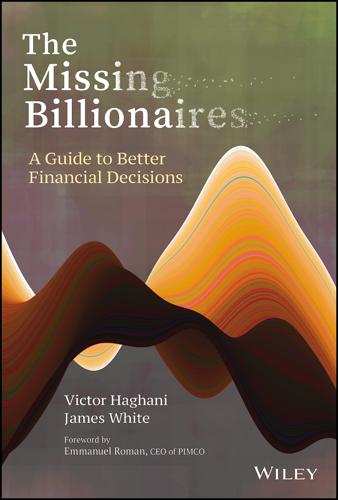
The Missing Billionaires: A Guide to Better Financial Decisions
by
Victor Haghani
and
James White
Published 27 Aug 2023
Turning to the question of estimating risk, your authors can personally attest that some of these active, alternative strategies involve significant amounts of leverage, which logically should result in return distributions with fatter tails than generated by more diversified, long‐only, unleveraged strategies. Proponents of alternative investments usually claim that they provide diversification benefits, but many alternatives, such as private equity and venture capital, are still basically equity investments. Some strategies, such as macro‐funds and managed futures funds, have a stronger claim of having a low correlation with the overall performance of capital markets, but that should not be expected from the vast majority of assets in this space. Some observers, particularly researchers at AQR, have argued that the apparent lower risk of private, illiquid investments that result from “smoothed” periodic mark‐to‐market is actually a feature of these investments that some investors value, resulting in a low or even negative liquidity premium.23 Do You Know the Significance of 3.9 Purrrcent?
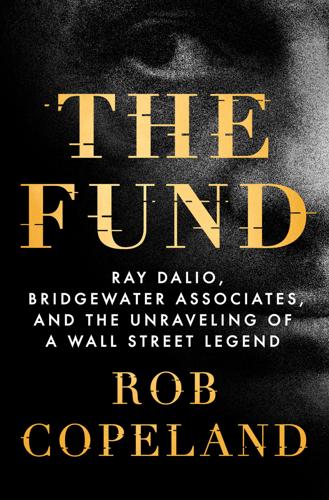
The Fund: Ray Dalio, Bridgewater Associates, and the Unraveling of a Wall Street Legend
by
Rob Copeland
Published 7 Nov 2023
Further, Bridgewater’s decisions in the markets are 98 percent systemized and, in the rare cases that there are deviations from the systems, the reasons for the deviations are recorded and audited.” shorted the U.S. dollar: Cassidy, “Mastering the Machine.” the average hedge fund lost 18 percent: “Hedge Funds Took a Serious Hit in 2008,” Associated Press, January 12, 2009. ended the year up roughly 9 percent: Gregory Meyer, “Managed Futures Gained, Left Hedge Funds in Dust in 2008,” Dow Jones Newswires, January 9, 2009. ended up making $780 million: Louise Story, “Above the Storm: Some Fund Managers Rake It In,” International Herald Tribune, March 26, 2009. world’s largest hedge fund: “Alpha Magazine Announces 2009.” Chapter 7: Look Out Dalio’s personal assistant: Kathleen O’Grady, “What Ray Dalio Taught Me About Authentic Leadership and Taxidermy,” Authentic Leadership Advisors.
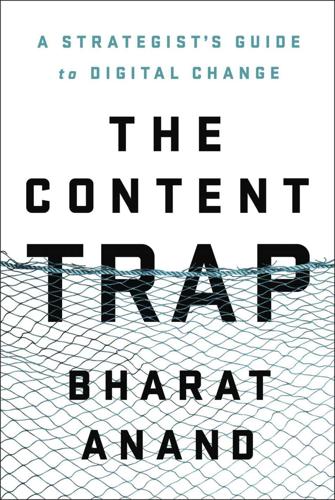
The Content Trap: A Strategist's Guide to Digital Change
by
Bharat Anand
Published 17 Oct 2016
Dead trees would serve as fuel for future fires, increasing the park’s vulnerability. Soil erosion would increase, filling rivers with silt, and killing fish. And visitors to the park would decrease, possibly in dramatic numbers. The Yellowstone fires of 1988 seem a lesson in management—in what not to do. And they hold hugely important lessons for managing future fires not just in Yellowstone but in other parks. They also contain lessons for managers in faraway arenas like media and entertainment, which have been experiencing “digital fires” for more than two decades. Consider benign triggers . Three friends, all early employees of PayPal, try to find video clips of certain events online, leading them to create a video-sharing site—YouTube—that jump-starts the digital video-sharing industry.
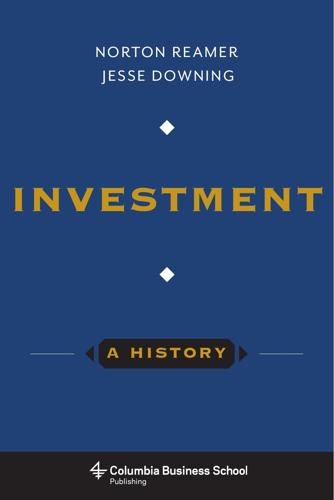
Investment: A History
by
Norton Reamer
and
Jesse Downing
Published 19 Feb 2016
See also usury interest rates: in China, 29; in Egypt, 23–24; Federal Reserve and, 198; in fiat systems, 201; Great Depression and, 106–7; savings and, 114, 135–36, 205; swaps, 183 Index 425 interisse, 35 international reply coupon, 156–57 inventions, 80–81, 89–90, 332 investment: definition of, 2; professionalization of, 123; theory, 9; vehicles, types of, 10 investment advisers, 137–39 Investment Advisers Act of 1940, 142, 275 Investment Company Act of 1940, 142, 286 Investment Company Institute, 114 investment management: future developments in, 10–11; issues in, 2; views on, 69 investment managers: highestpaid, 304–6, 307; independence and entrepreneurship of, 3, 10, 291–300, 300, 315–16, 319; revenue growth and wealth creation for, 303–8; successful, 10–11; investment partnerships, 51–55; formation of, 258; global influences on, 54–55; Islamic societies and, 53; medieval Europe and, 53–54; in Mediterranean Sea and Middle East, 51–52 investment principles, 3–7, 332–34; financial leverage as, 5–6, 333; fundamental value as, 4–5, 333; real ownership as, 4, 333; resource allocation as, 6–7, 334 investment professionals: performance of, 247–55; relationships with, 10 Investors Diversified Services (IDS), 142–43 Ira Haupt & Company, 168 IRAs.
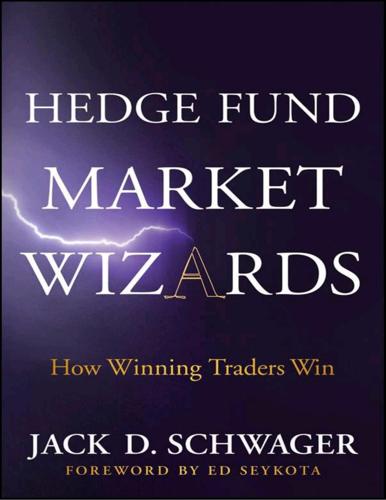
Hedge Fund Market Wizards
by
Jack D. Schwager
Published 24 Apr 2012
He has never had a down year, and has been able to combine a solid 17.2 percent average annual compounded net return (25.7 percent gross) with relatively low volatility and moderate drawdowns. Return alone is a highly inadequate metric for a futures manager because it is so dependent on the exposure level chosen by the manager. Futures managers always use only a fraction of assets under management to meet margin requirements. Therefore, any futures manager can double returns by simply doubling exposure without any need for borrowing. High return could just as easily represent excessive risktaking rather than manager skill.

The Crisis of Crowding: Quant Copycats, Ugly Models, and the New Crash Normal
by
Ludwig B. Chincarini
Published 29 Jul 2012
A quant crisis is one that affects quantitative money managers, vaguely defined as any portfolio managers that use a quantitative system to manage trades, rather than a human-based security-picking system. The quant world includes various types of managers, including those in charge of statistical arbitrage hedge funds, many managed futures funds, and a large class of long-short or market-neutral equity funds. This quant crisis mainly affected funds using quantitative equity strategies. In 2007, the leading quant portfolio companies were Barclays Global Investors (BGI), Goldman Sachs Asset Management (GSAM), State Street, Morgan Stanley’s Process Driven Trading (PDT) group, AQR, First Quadrant, Analytic Investors, AXA Rosenberg, Panagora, Mellon Capital, Acadian, Analytic, and Numeric.

This Changes Everything: Capitalism vs. The Climate
by
Naomi Klein
Published 15 Sep 2014
Wired, August 5, 2009; NOT AN INVESTOR IN BIOFUEL PROJECTS: personal email communication with Freya Burton, director of European relations, LanzaTech, April 18, 2014; Ross Kelly, “Virgin Australia Researching Eucalyptus Leaves as Jet Fuel,” Wall Street Journal, July 6, 2011; email communication, communications manager, Future Farm Industries Cooperative Research Center, April 29, 2014; “HASN’T”: Branson, Screw It, Let’s Do It, 132; BIOFUELS STALLED: “What Happened to Biofuels?” The Economist, September 7, 2013; “INCREASINGLY CLEAR”: personal email communication with Richard Branson, May 6, 2014; FOOTNOTE: National Research Council, Renewable Fuel Standard: Potential Economic and Environmental Effects of U.S.
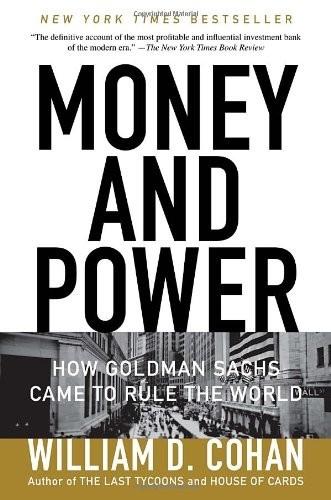
Money and Power: How Goldman Sachs Came to Rule the World
by
William D. Cohan
Published 11 Apr 2011
That idea was off the table, he said, although Goldman might consider a few smaller acquisitions, especially among asset managers, where Goldman was still trying to grow the $160 billion it had under management. “We will have some new strategic opportunities, and we will go into acquisition mode,” he said. “I am not talking about mergers, but acquisitions.” As an example, Corzine could have mentioned Goldman’s May 1997, roughly $100 million acquisition of Commodities Corporation, a $2 billion managed futures, commodities, and currencies hedge fund based in Princeton, New Jersey, that counted among its founders Paul Samuelson, Larry Summers’s uncle. —— INTERNECINE WARFARE ASIDE, in the aftermath of the IPO announcement, Goldman Sachs seemed to be floating on a cloud: the partners were united behind a task (underwriting an IPO) for which they were the world’s experts and behind a cause (themselves) that provided them with all the incentive they could ever need to execute flawlessly.

The Prize: The Epic Quest for Oil, Money & Power
by
Daniel Yergin
Published 23 Dec 2008
The worry about too much Soviet oil coming into world markets—which animated so many critical events in the history of oil—could be turned upside down in the 1990s by significant shortfalls. Yet ultimately, if development proceeds, the Soviet Union could end up an even more important exporter. If there are new surprises, new crises, how well prepared are we? After the 1973 oil shock, it was clear that the oil companies could not and would not manage future crises by themselves, and that it was up to governments to take on that role. In the years since, the industrial countries have developed an energy security system built around the International Energy Agency and the strategic stockpiles, such as the U.S. Strategic Petroleum Reserve and similar reserves in Germany and Japan, which can be brought into play to avert a shortfall and counteract a panic.